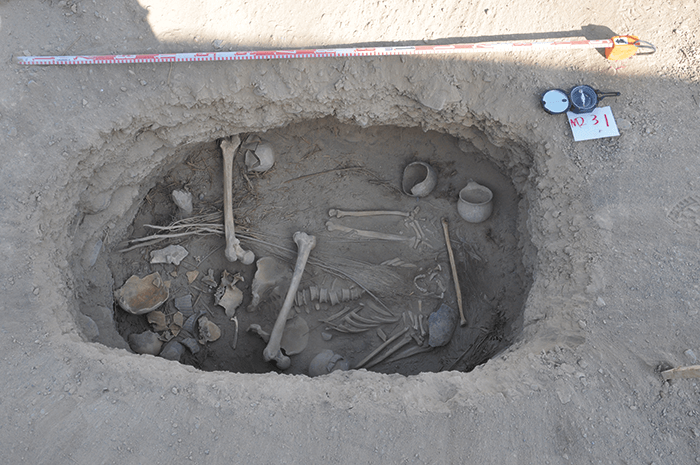Dead men don’t wear plaid... But they can be shrouded in the leaves of cannabis plants. The recent discovery of a corpse decorated with archeobotanical remains – with some identified as cannabis – has provided archaeologists with an insight into ancient burial rituals in prehistoric Central Eurasia.

The construction of modern tombs in the Jiayi cemetery of Turpan, Northwestern China, recently led to the discovery of several burial chambers, including an ancient tomb where several plants were arranged around the body of a buried male. Radiometric dating indicated that the tombs – as well as the plants – are approximately 2,400–2,800 years old. To determine the age, three samples from the tomb were selected and sent to Peking University for analysis by accelerator mass spectrometry (AMS) – a stem from the cannabis plant, a femur from the skeleton itself, and a reed straw from the pillow beneath the head of the deceased. “Using AMS is fairly routine for dating the age of plants, and tombs like the one in Turpan,” explains lead author Hongen Jiang (1). “I confirmed the plant identification using scanning electron microscopy (SEM), which shows the morphology of the plants in detail, including the surface of the plant organ, and even the structure of the seed cell walls.” Jiang says it is impossible to say whether the marijuana was used for ritual purposes based just on an analysis of the plant itself. But the arrangement of the plant was significant. “It seemed to have been purposefully placed over the body, suggesting that the plants had some significance to the buried man, or that it was imagined the plants could be of use in the afterlife,” proposes Jiang.
According to Jiang, it’s the first time that such old whole plants of cannabis have been discovered, which allows researchers to draw some conclusions about how it was used and sourced. “Fragments of cannabis have been discovered in Central Asia and Southern Siberia on several occasions, but nobody knows where they were from, whether they were collected from other areas, or moved via trade,” says Jiang. In the case of the Turpan tomb, the fact that whole (rather than fragmented) plants were discovered suggests that they were cultivated or collected locally. It was an amazing discovery.” Based on archaeological excavations – as well as The Histories of Herodotus – it seems that cannabis use was very popular during the first millennium BC, with other discoveries asserting that it may have been used recreationally or for medicinal purposes. “The cannabis discovered in the Pazaryk cemetery was found in containers, with the seeds carbonized due to burning, and in other parts of the coeval Yanghai cemetery parts of leaves, seeds, and small twigs were discovered in leather baskets or wooden basins – very like the cannabis used today,” says Jiang.
References
- H Jiang et al, “Ancient cannabis burial shroud in a central Eurasian cemetery”, Econ. Bot., 70, 213–221 (2016) [published online: 20 September 2016]




